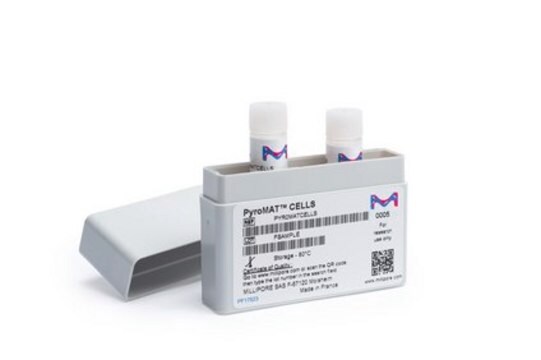MABS1252
Anti-Polycystin-1 Antibody, clone E4 (5F4D2)
clone E4 (5F4D2), from mouse
Synonym(s):
Polycystin-1, Autosomal dominant polycystic kidney disease 1 protein
About This Item
Recommended Products
biological source
mouse
Quality Level
antibody form
purified immunoglobulin
antibody product type
primary antibodies
clone
E4 (5F4D2), monoclonal
species reactivity
human, mouse, rat
technique(s)
immunocytochemistry: suitable
immunohistochemistry: suitable (paraffin)
immunoprecipitation (IP): suitable
western blot: suitable
isotype
IgG1κ
NCBI accession no.
UniProt accession no.
shipped in
wet ice
target post-translational modification
unmodified
Gene Information
human ... PKD1(5310)
General description
Specificity
Immunogen
Application
Immunoprecipitation Analysis: A representative lot immunoprecipitated polycystin-1 from mouse lung tissue lysates (Courtesy of Dr. Feng Qian, University of Maryland School of Medicine, Baltimore, MD).
Western Blotting Analysis: A representative lot detected exogenously expressed polycystin-1 in lysates from HEK cells transfected with human or mouse Pkd1 cDNA, but not in lysates from mock-transfected HEK cells (Courtesy of Dr. Feng Qian, University of Maryland School of Medicine, Baltimore, MD).
Western Blotting Analysis: A representative lot detected the polycystin-1 (PC1) GPS domain cis-autocleaved N-terminal fragment (NTF) in lysates from HEK cells transfected with full-length Pkd1 cDNA, but not in lysates from mock-transfected HEK cells (Kim, H., et al. (2014). Nat. Commun. 5:5482).
Immunocytochemistry Analysis: A representative lot and an anti-Arl13b antibody co-stained the primary cilium of 4% formaldehyde-fixed, 0.1% Triton X-100-permeabilized murine embryonic fibrolasts (mMEF) and collecting duct (CD)-derived cells by dual fluorescence immunocytochemistry. No polycystin-1 immunoreactivity was detected in Pkd1-knockout mMEFs (Kim, H., et al. (2014). Nat. Commun. 5:5482).
Signaling
Developmental Signaling
Quality
Immunohistochemistry Analysis: An 1:250 dilution of this antibody lot detected polycystin-1 immunoreactivity in human kidney tissue.
Target description
Physical form
Storage and Stability
Other Notes
Disclaimer
Not finding the right product?
Try our Product Selector Tool.
Storage Class Code
12 - Non Combustible Liquids
WGK
WGK 1
Flash Point(F)
Not applicable
Flash Point(C)
Not applicable
Certificates of Analysis (COA)
Search for Certificates of Analysis (COA) by entering the products Lot/Batch Number. Lot and Batch Numbers can be found on a product’s label following the words ‘Lot’ or ‘Batch’.
Already Own This Product?
Find documentation for the products that you have recently purchased in the Document Library.
Our team of scientists has experience in all areas of research including Life Science, Material Science, Chemical Synthesis, Chromatography, Analytical and many others.
Contact Technical Service





